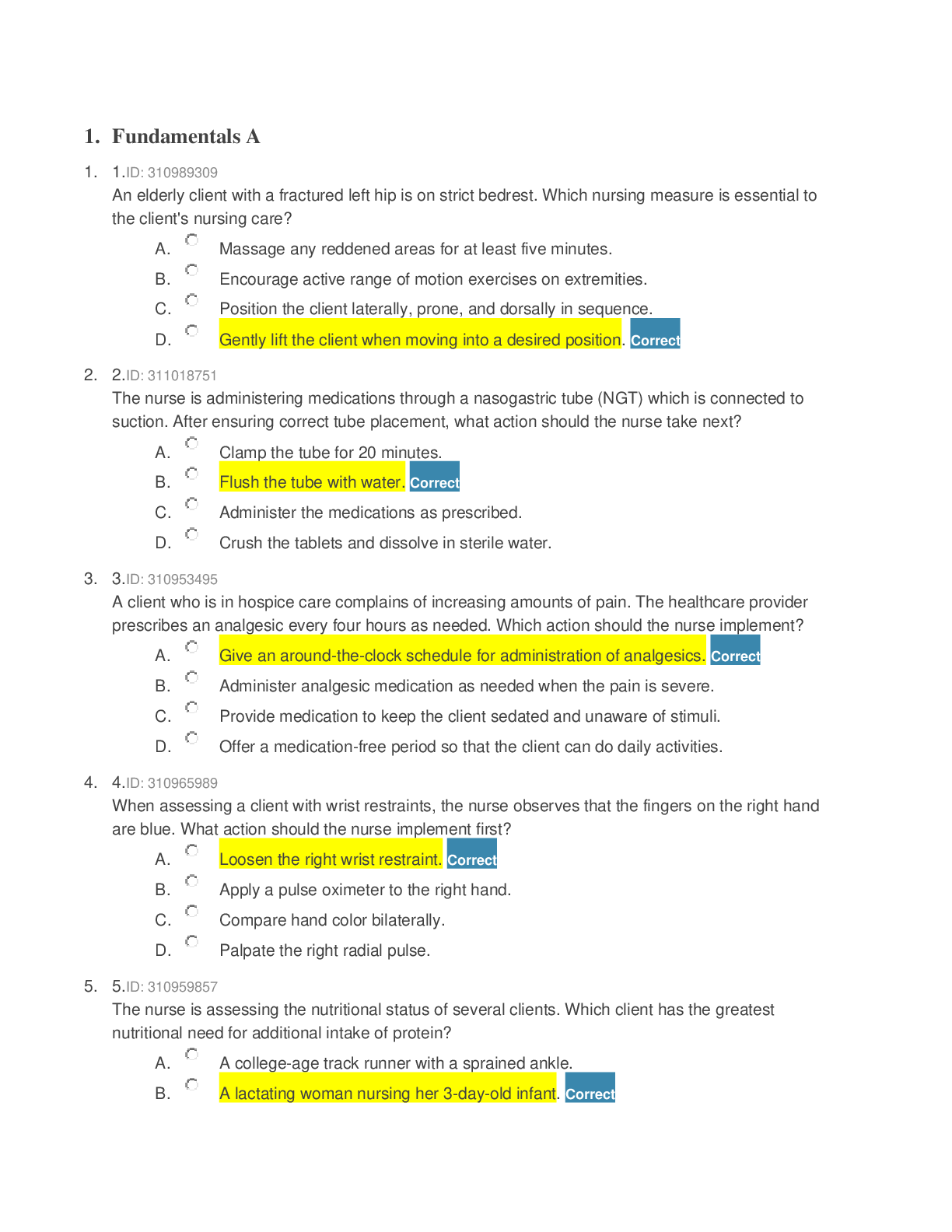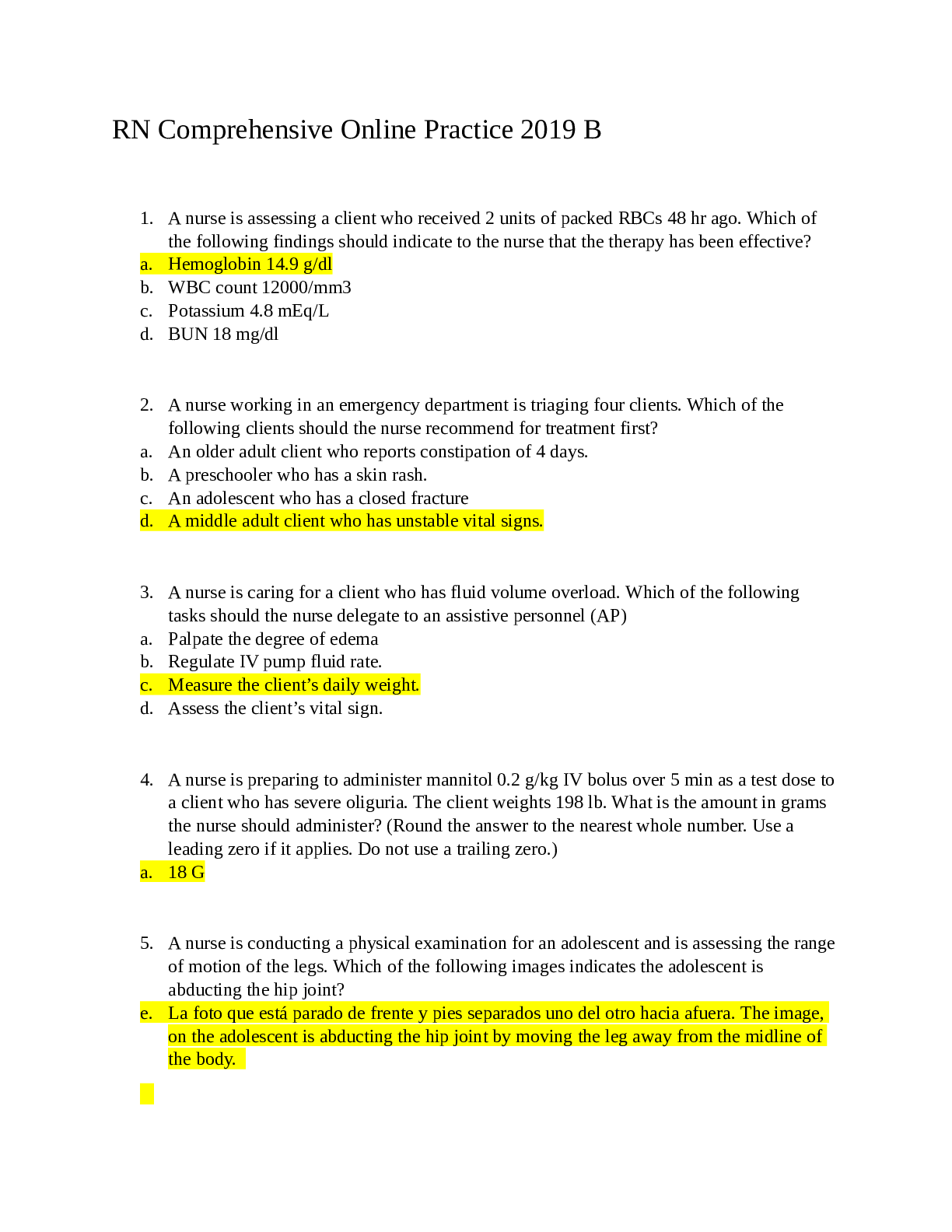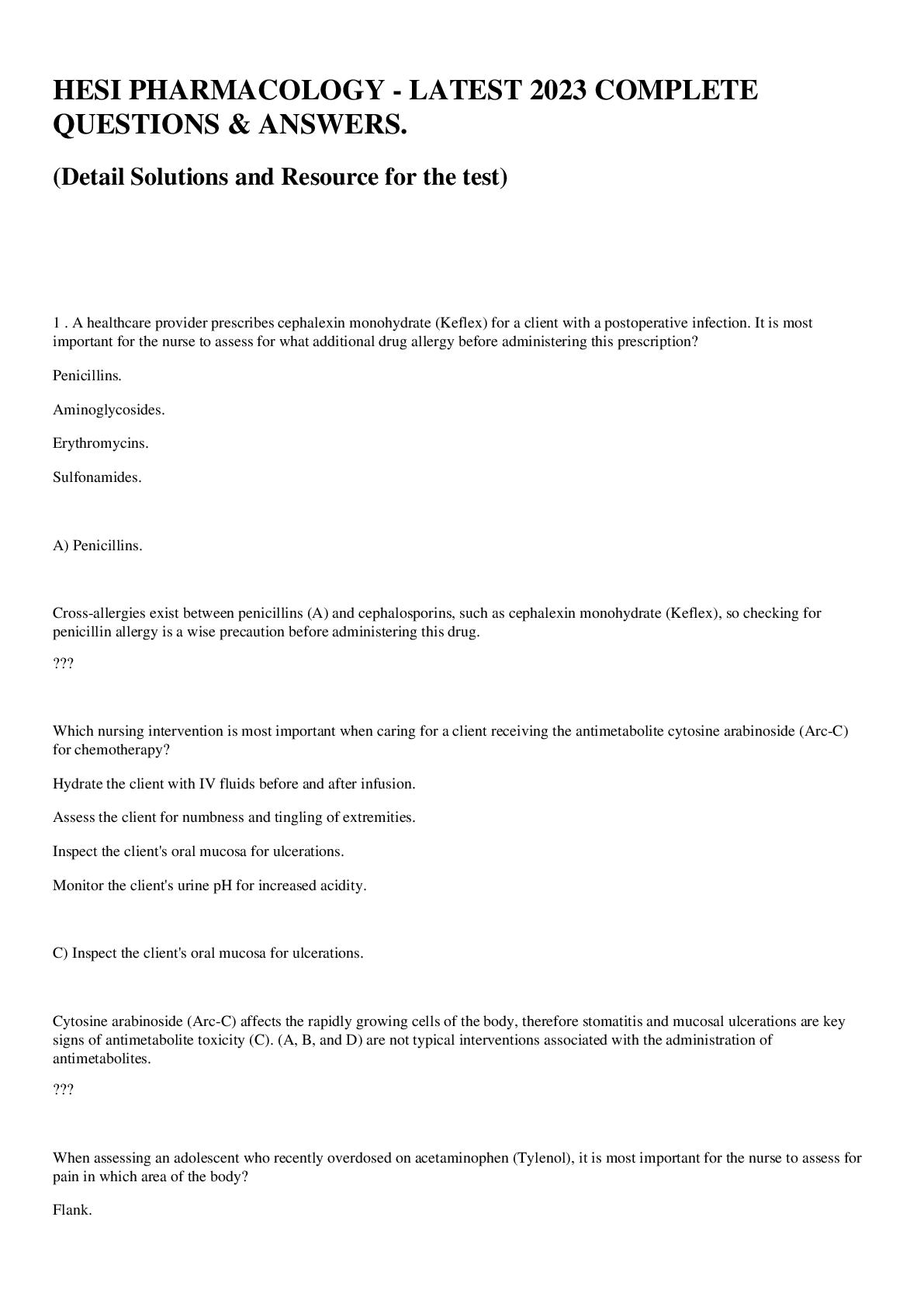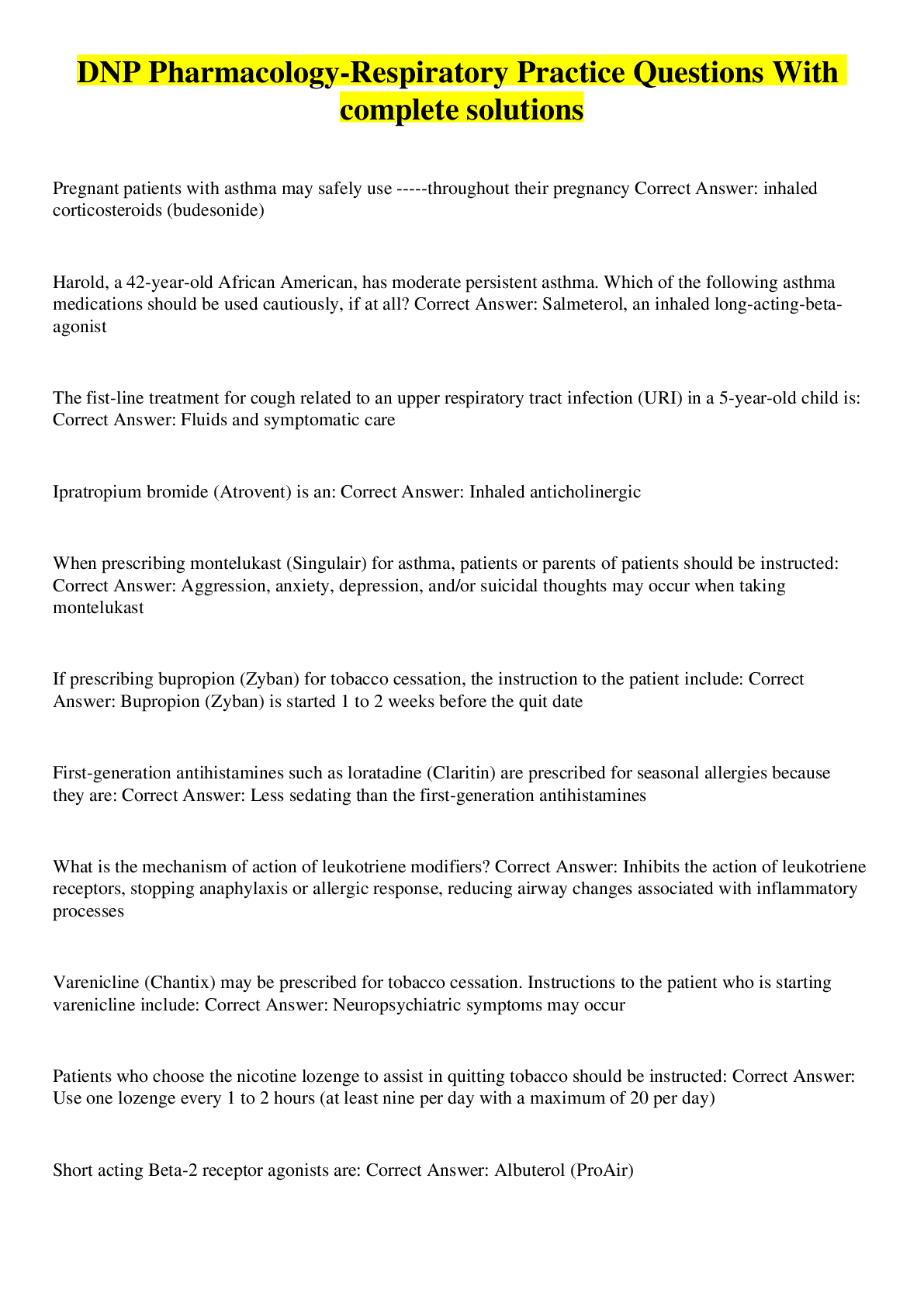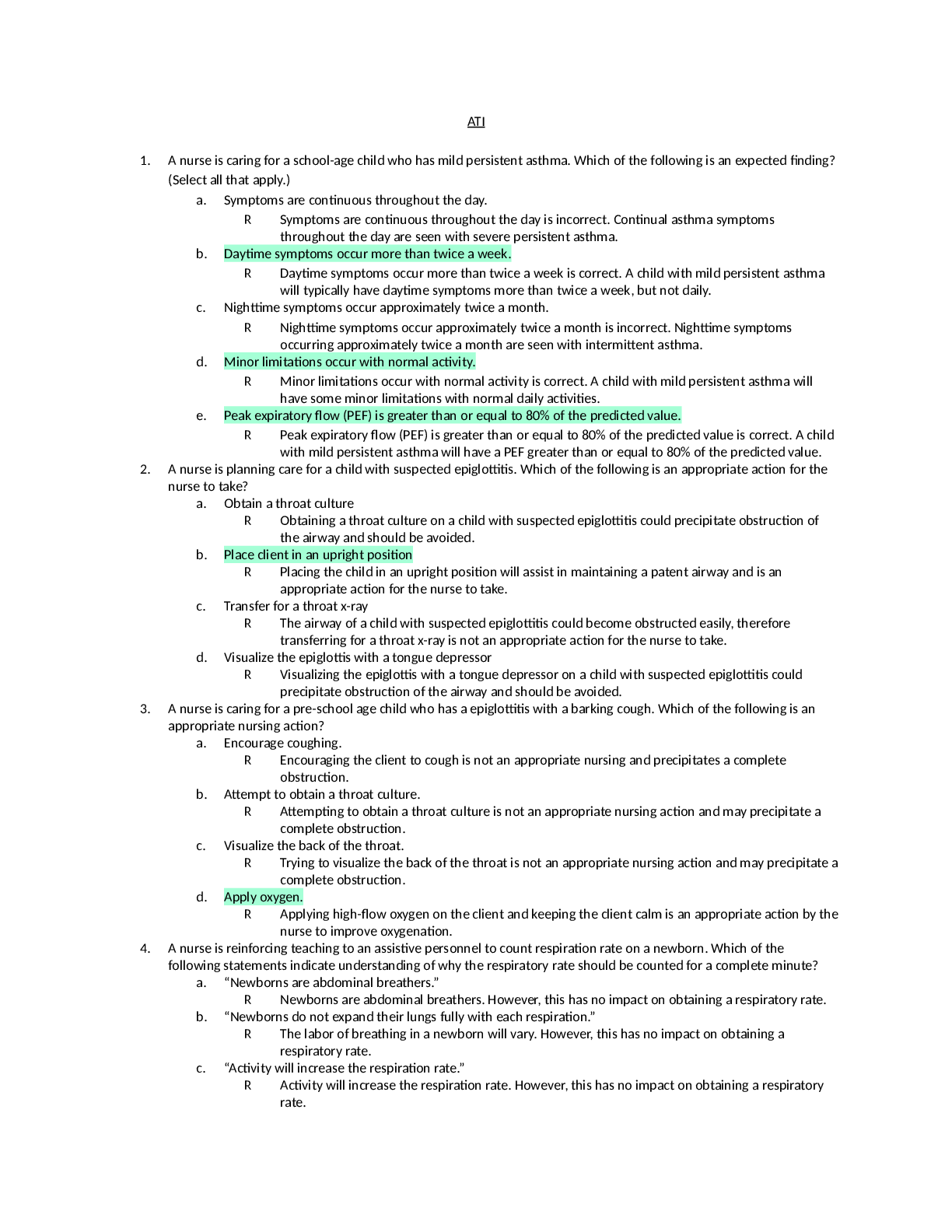NR 341 Respiratory Practice Questions & Answers
Document Content and Description Below
NR 341 Respiratory Practice Questions & Answers 1. The nurse is caring for a patient who is hyperventilating. Which acid-base imbalance is the patient at risk for developing due to hyperventilation? A... . Metabolic acidosis. B. Metabolic alkalosis. C. Respiratory acidosis. D. Respiratory alkalosis. 2. The nurse is caring for a trauma patient. How should the nurse interpret the patient’s arterial blood gas (ABG) results: pH 7.26, PaCO2 38 mm Hg, HCO3 11 mEq/L? A. Metabolic acidosis. B. Metabolic alkalosis. C. Respiratory acidosis. D. Respiratory alkalosis. 3. The nurse is caring for a patient who is short of breath. How should the nurse interpret the patient’s arterial blood gas (ABG) results: pH 7.21, PaCO2 64 mm Hg, HCO3 24 mEq/L? A. Metabolic acidosis. B. Metabolic alkalosis. C. Respiratory acidosis. D. Respiratory alkalosis. 4. The nurse is caring for a patient in acute respiratory failure who is receiving mechanical ventilation. Which assessment is priority for the nurse to use to evaluate the effectiveness of the mechanical ventilation? A. Heart rate. B. Capillary refill. C. Blood pressure. D. Arterial blood gas. 5. Which laboratory findings should the nurse expect for a patient in acute respiratory failure? A. SaO2 92%. B. PaO2 58 mm Hg. C. Arterial pH 7.50. D. PaCO2 25 mm Hg. 6. The nurse is caring for a patient who has labored respirations, an irregular breathing pattern, and asymmetrical chest movement. Which device should the nurse use to provide the highest level of oxygen via a low-flow system in this patient? A. Nasal cannula. B. Simple face mask. C. Non-rebreather mask. D. Partial rebreather mask. 7. A patient comes to the emergency department after experiencing trauma to the chest. The patient is restless and the nurse auscultates diminished breath sounds unilaterally and observes a deviation in the patient’s trachea. Which condition should the nurse anticipate the patient has developed? A. Bronchitis. B. Pneumothorax. C. Pulmonary embolism. D. Exacerbation of asthma. 8. The nurse is caring for a patient diagnosed with acute exacerbation of COPD. The patient begins to have shallow breathing, using accessory muscles, and begins to gasp for air. The patient’s respiratory rate is 8 breaths per minute and SpO2 is 89%. Which procedure should the nurse anticipate for the client? A. Chest tube insertion. B. 100% oxygen via non-rebreather mask. C. Tracheostomy insertion with frequent suctioning. D. Endotracheal intubation and positive pressure ventilation. Could also use NPPV 9. The nurse is caring for a patient diagnosed with right lung pneumonia. In which position should the nurse place the patient in to facilitate maximum gas exchange? A. Trendelenburg position B. Right side-lying position. C. Supine with head elevated 15 degrees. D. Positioned with the left side dependent [Show More]
Last updated: 2 years ago
Preview 1 out of 4 pages
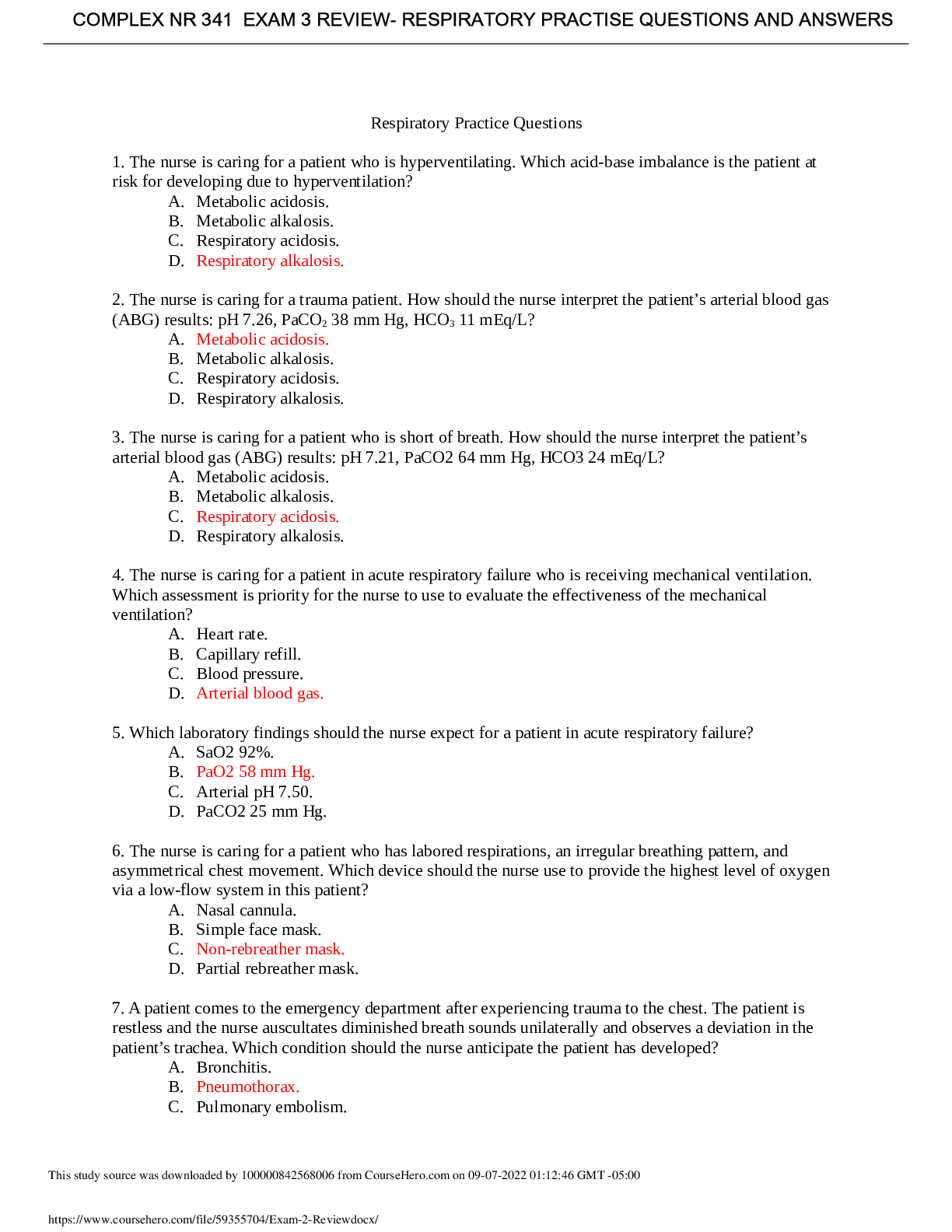
Buy this document to get the full access instantly
Instant Download Access after purchase
Buy NowInstant download
We Accept:

Reviews( 0 )
$12.00
Can't find what you want? Try our AI powered Search
Document information
Connected school, study & course
About the document
Uploaded On
Dec 09, 2020
Number of pages
4
Written in
Additional information
This document has been written for:
Uploaded
Dec 09, 2020
Downloads
0
Views
143

.png)
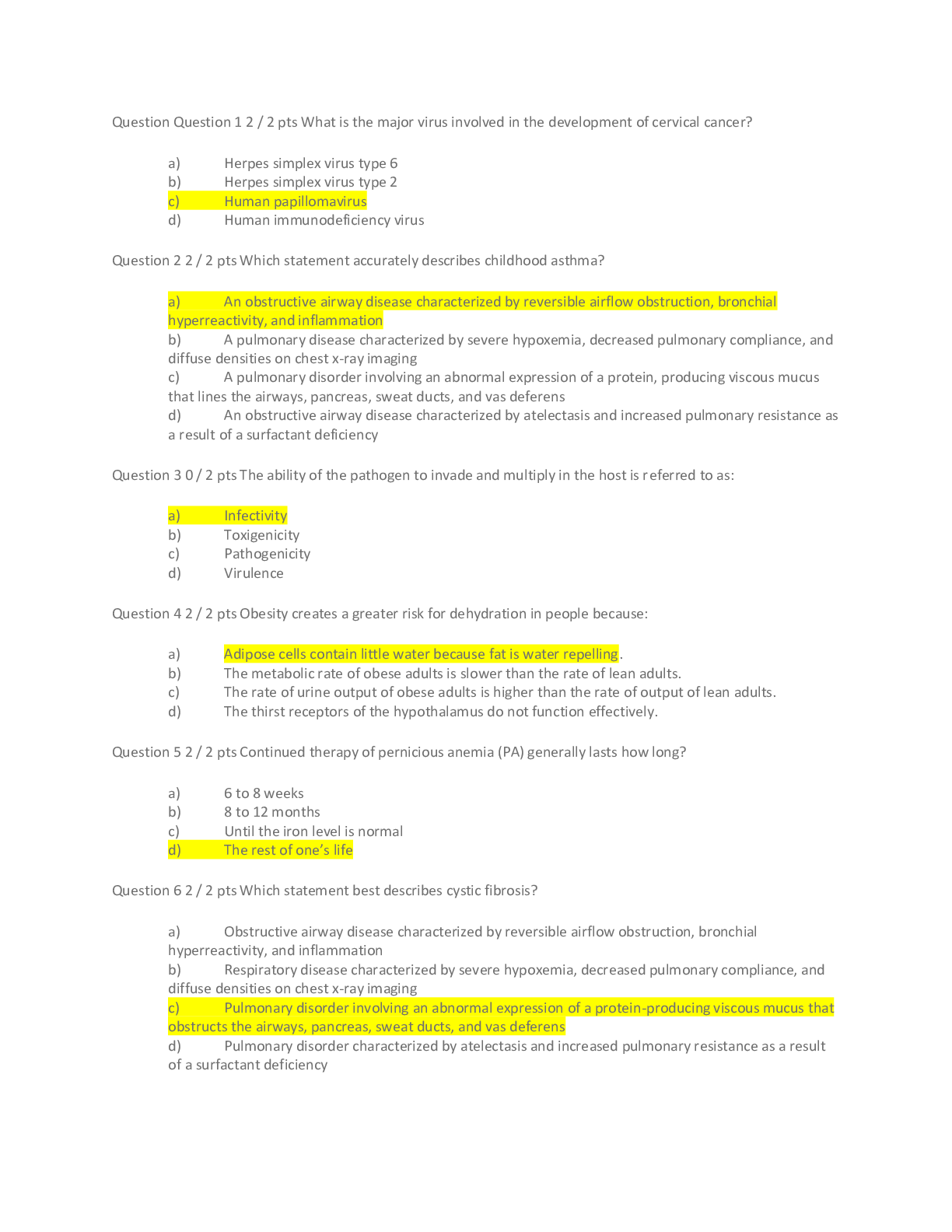
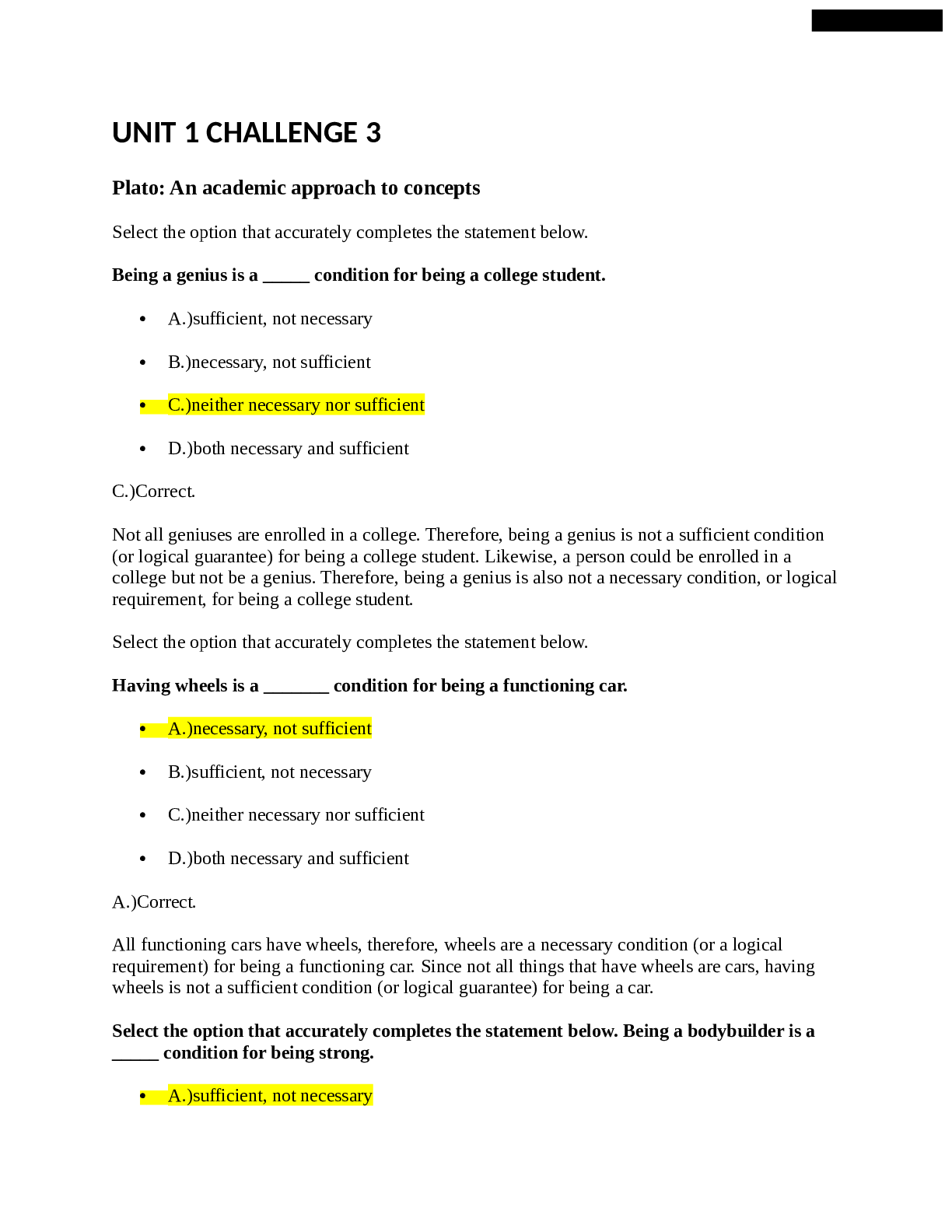
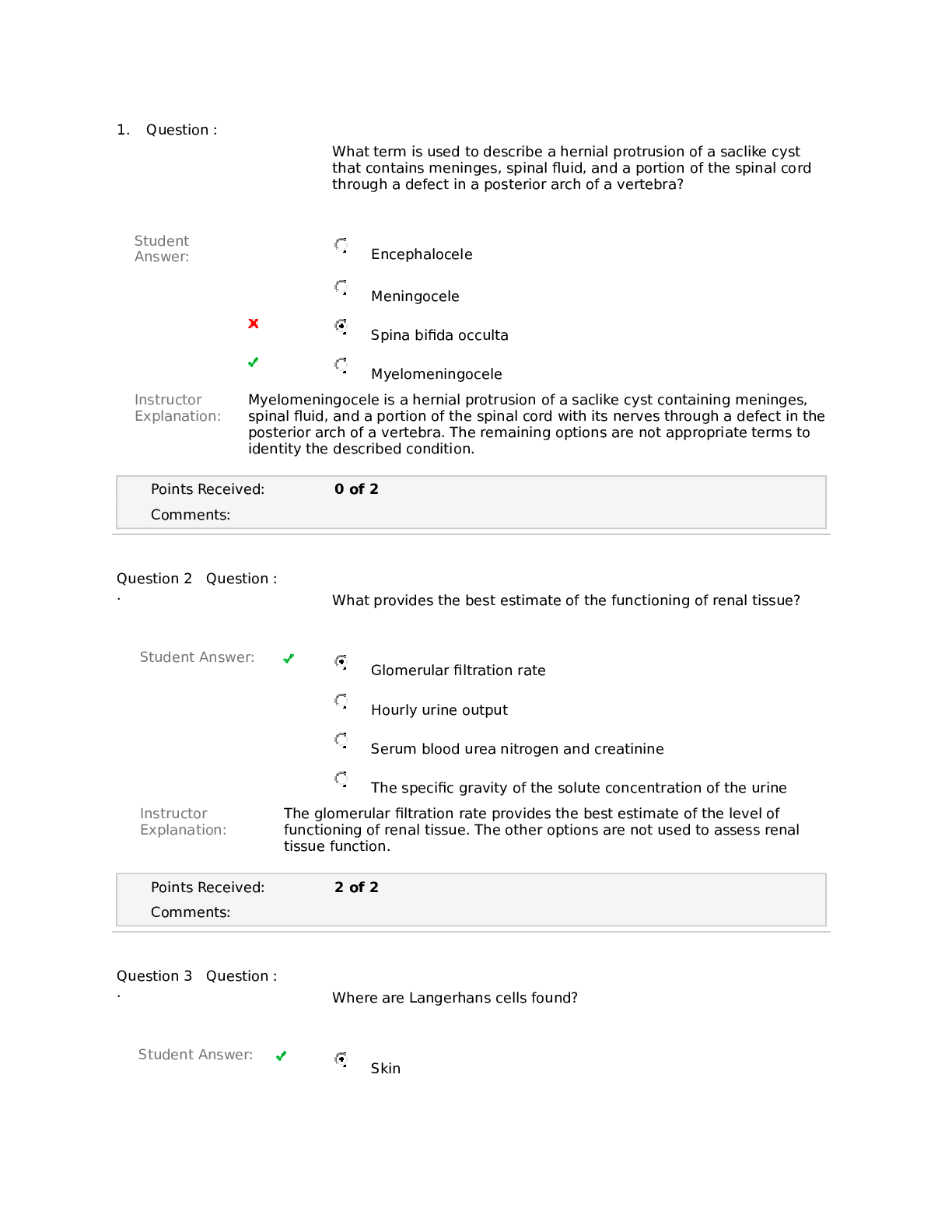
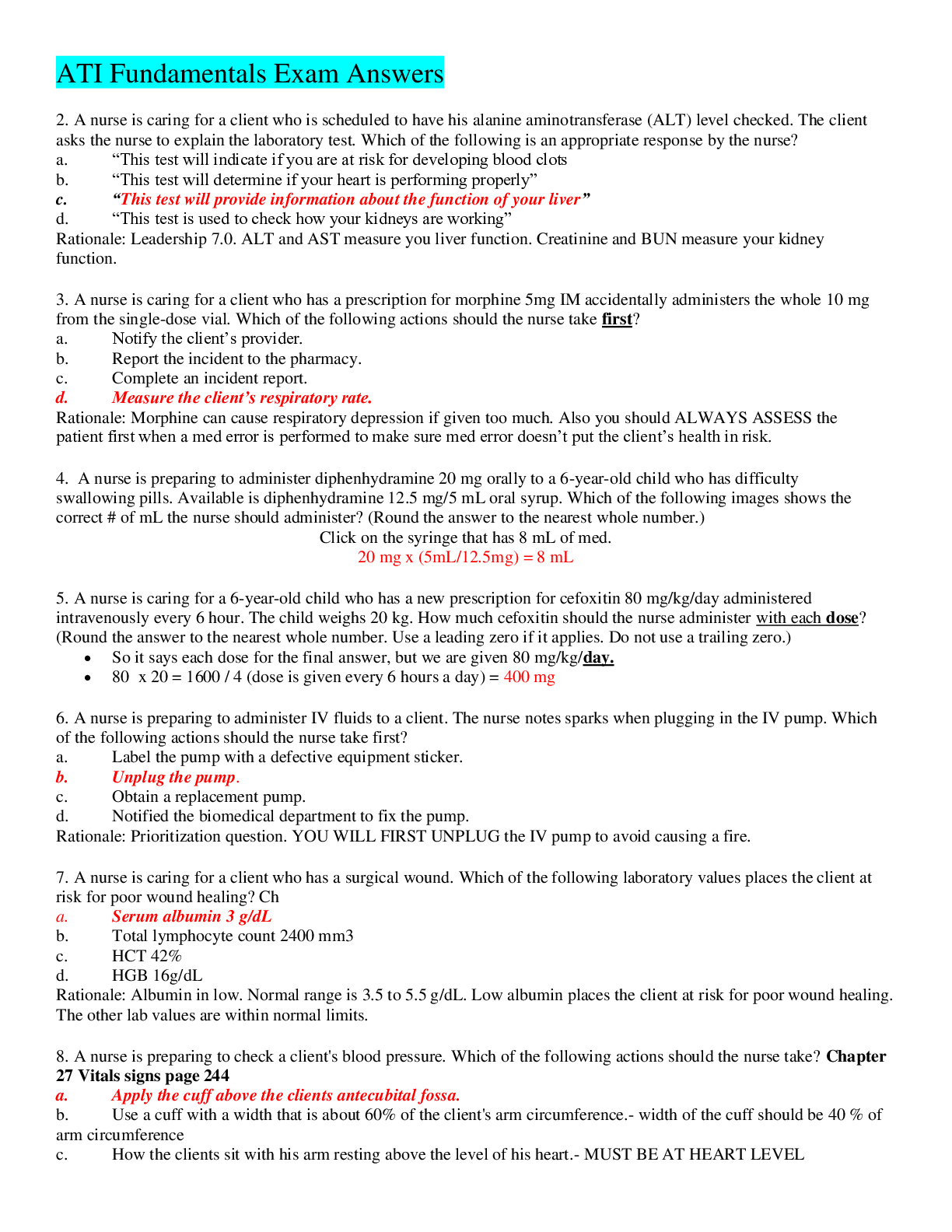
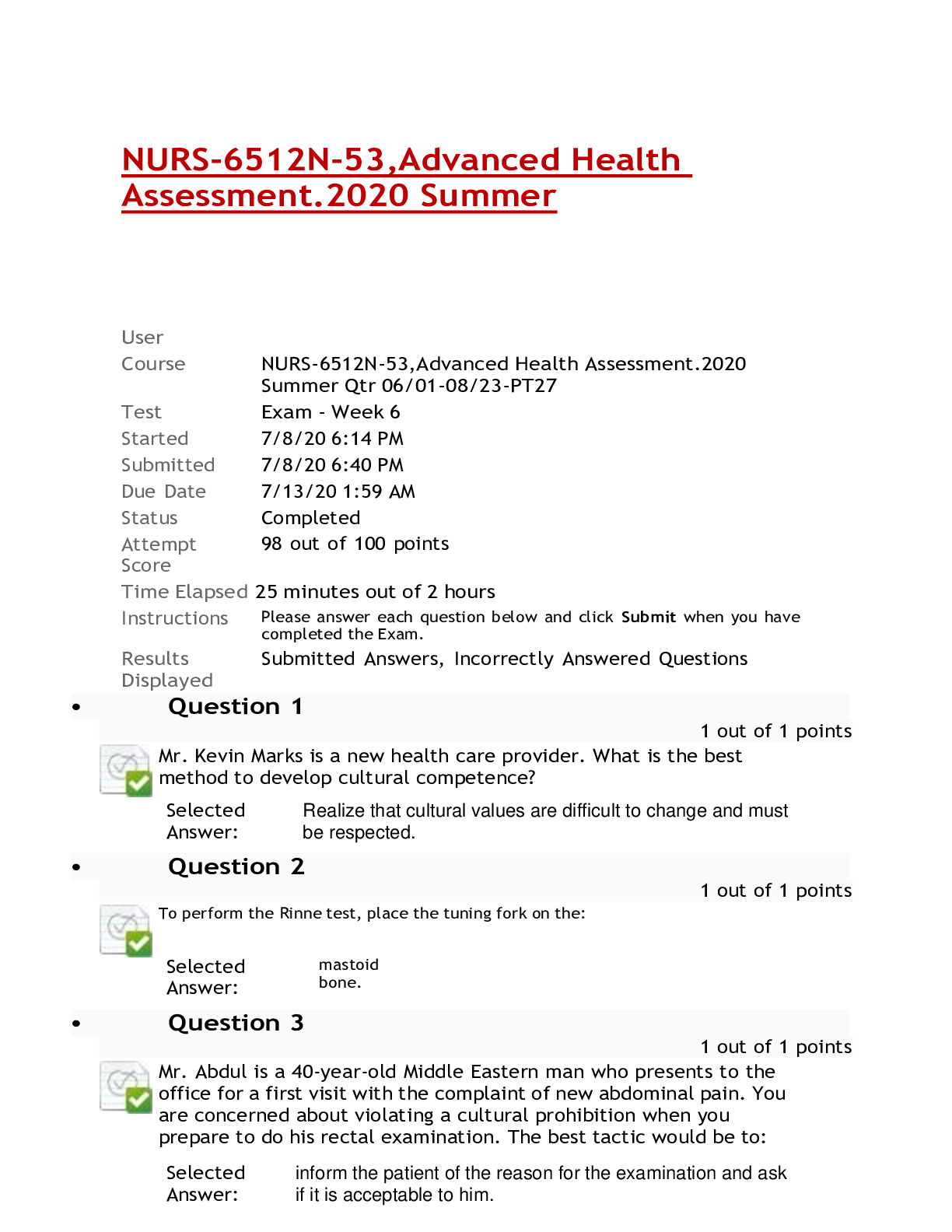
.png)
